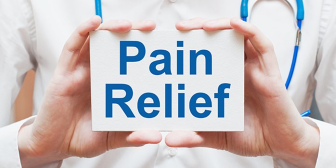
Gabapentin, available in various dosages including 300mg and 800mg, has become an indispensable tool in pediatric care for addressing specific neurological and pain management conditions. This article delves deep into its applications, safety profiles, dosage adjustments, and transformative potential for young patients.
Gabapentin is a gamma-aminobutyric acid (GABA) analog, although it doesn’t directly interact with GABA receptors. Originally developed for epilepsy, it is now widely prescribed for neuropathic pain and off-label uses. Its efficacy and tolerability make it a popular choice for pediatric care.
Gabapentin 300mg is an anticonvulsant that treats seizures by decreasing abnormal excitement in the brain. It also relieves PHN's pain by changing how the body senses pain. However, it is not known exactly how gabapentin works to treat restless legs syndrome.
Gabapentin works by modulating calcium channels on nerve cells, reducing the overactive transmission of pain and abnormal electrical signals. This mechanism makes it particularly effective for:
Gabapentin is often used as an adjunct therapy for focal seizures in pediatric patients. It complements other antiepileptic drugs by enhancing seizure control without significant drug-drug interactions.
Children suffering from chronic pain conditions, such as complex regional pain syndrome (CRPS) or nerve injuries, may benefit from gabapentin. Its ability to modulate nerve excitability offers relief where other medications fall short.
While not FDA-approved for these indications, gabapentin's calming effects on neural activity have proven beneficial for managing pediatric anxiety and insomnia in clinical practice.
Gabapentin is generally well-tolerated, but side effects can occur, especially at higher doses. Common side effects include:
In rare cases, gabapentin can cause:
Gabapentin 800mg is used with other medications to prevent and control seizures. It also relieves nerve pain following shingles (a painful rash caused by herpes zoster infection) in adults. Gabapentin is known as an anticonvulsant or antiepileptic drug.
Gabapentin’s unique metabolism, primarily through the kidneys, reduces the risk of hepatic drug interactions. However, care should be taken with:
Since gabapentin is excreted unchanged by the kidneys, dosage adjustments are critical in children with renal impairment to prevent accumulation and toxicity.
While generally safe for prolonged use, periodic evaluation of efficacy and side effects is essential to maintain an optimal balance.
Several studies have demonstrated gabapentin's success in reducing seizure frequency, particularly as an adjunct therapy in refractory epilepsy cases.
Clinical trials reveal a significant improvement in pain scores for pediatric patients with diabetic neuropathy and surgical nerve injuries.
Emerging research supports gabapentin's utility in managing pediatric anxiety disorders and improving sleep quality in children with neurological conditions.
Gabapentin is less likely to cause severe side effects like liver toxicity, making it an attractive option for long-term use in children.
Gabapentin offers a non-addictive alternative for managing chronic pain, avoiding the risks of dependency associated with opioids.
Gabapentin 300mg and 800mg provide a robust and versatile option for managing neurological and pain-related conditions in pediatric care. With careful dosage adjustments and monitoring, it ensures efficacy and safety, offering a better quality of life for young patients and their families.
|
|